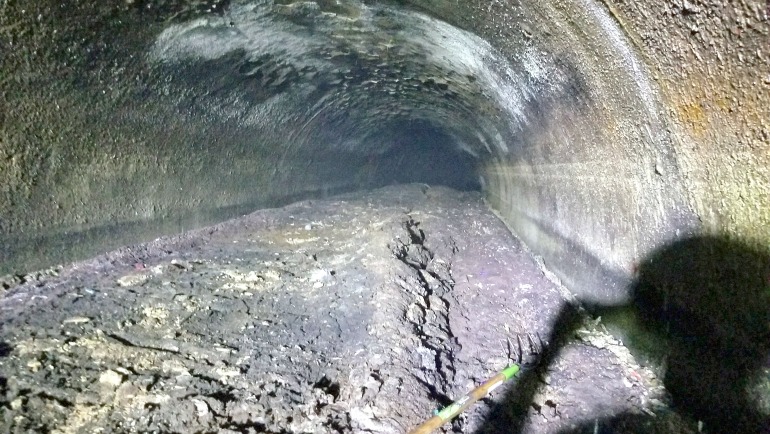
DETROIT – Macomb County, Michigan experienced a blockage of an 11-foot diameter sewage line in 2018, which could have caused raw sewage to back up into thousands of homes if left untreated. The source of the blockage: a massive buildup of fats, oils and greases (FOGs) discharged into the sewer system by homes, industry and restaurants. These massive FOG buildups have been termed "fatbergs" by the media, and their impact on the environment is potentially severe.
The Macomb County Public Works Office was able to mobilize quickly to remove one the biggest sewer blockages ever experienced in the county, eliminating a potential threat to local waterways. Continued growth of fatbergs can cause sewage backups, leading to sewage overflow that threaten the health of rivers and the Great Lakes ecosystem.
“Although FOG blockages have been known for many years, our understanding of their detailed chemical structure and formation mechanisms is lacking due to limited real-time and in-place data,” said Carol Miller, Ph.D., professor of civil and environmental engineering and director of Healthy Urban Waters at Wayne State University. “The formation and planned removal of such a massive FOG blockage presents a rare opportunity to study these formations, and funding received from the National Science Foundation will help our efforts in this regard.”
An $80,000 grant from the National Science Foundation will utilize real-time video, pressure data and advanced chemical analysis to advance the understanding of the physical and chemical structure of FOG blockages. Results will be used to identify potential risks associated with blockages and inform future targeted prevention and mitigation efforts.
“This fatberg is somehow morbidly interesting, which gives us a chance to use it as a teachable moment,” said Candice S. Miller, Macomb County Public Works commissioner. “This study can continue the effort to educate the public on simple but important steps they can take to protect our infrastructure and, ultimately, our environment.”
The project, led by Professor Miller with Tracie Baker, D.V.M., assistant professor, Institute of Environmental Health Sciences at Wayne State University, as co-lead, will collaborate with the Michigan Science Center to increase awareness and understanding of the impacts of sewer backups through the creation of an educational centerpiece for the museum about the occurrence of such blockages and actions that the public can adopt to mitigate the issue. The project aims to be unveiled later this year. Macomb County will collaborate by making the fatberg and associated data available for research efforts.
The project, RAPID: Response to Massive Sewer Blockage for Immediate Flood Mitigation and Future Remedies, will lead to new information about the chemistry and hydraulic characteristics of fatbergs and the environmental considerations associated with their growth, as well as create a public understanding of fatbergs and how they can aid in mitigating their existence.
The grant number for this National Science Foundation award is 1903329.
Commissioner Miller and Professor Miller are not related.
Wayne State University is one of the nation’s pre-eminent public research universities in an urban setting. Through its multidisciplinary approach to research and education, and its ongoing collaboration with government, industry and other institutions, the university seeks to enhance economic growth and improve the quality of life in the city of Detroit, state of Michigan and throughout the world. For more information about research at Wayne State University, visit http://www.research.wayne.edu.
